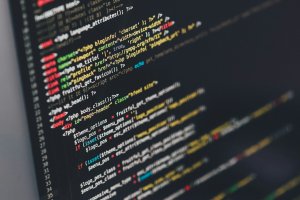The vicissitudes of post-trade digitalization
The phenomenon of day-traders piling into no-fee, mobile-native venues in unprecedented volumes to buy stocks and call options in GameStop and other heavily short-sold companies reverberated throughout financial markets in the last week of January. The snowballing demand created massive share price volatility and huge collateral requirements, restricting retail investors’ access to trades as momentum was reaching its peak

By Kenan Maciel, Director of Strategy, Lab49
While the introduction of state-of-the-art digital trading interfaces has enabled increased trading activity, it has also created challenges for post-trade operations and introduced cost, delays, and disruption. That has been a familiar story across a range of asset classes over recent years. It will resonate with professional traders and their institutional clients, for whom post-trade events have long accounted for a majority of customer dissatisfaction issues.
The trading restrictions experienced in late January resulted in controversy and public outcry, reflecting the retail market’s relative inexperience with these current challenges. They also show the high stakes of initiatives to address the challenges, and how far the market still has to go.
Post-trade automation: a commercial imperative
The sales and execution portions of the trade lifecycle have already largely undergone digitalization and automation within banks. It is post-trade functions that now remain as the major cost center of each trade, with the huge efficiency gains on offer from automation still to be realized. It is commonplace for these processes to still be manually intensive and non-interoperable. For example, buy-side settlement systems are prevented from automatically matching allocations from brokers because ‘cleared trade’ messages are provided via a portal rather than as standardized FIX communications.
This means that post-trade automation is comparatively low-hanging fruit and offers a significantly better return on investment than incremental spend on further front-office digitalization. The potential benefits have been demonstrated by the minority of early movers who have adopted practices such as automating credit decisions and back-office functions, digitizing document management, and offering clients 24/7 availability via interactive voice response. A McKinsey Horizon360 study found that institutions it identified as ‘high-IT-effectiveness players’ had average profit margins of 53% – over twice the 26% achieved by their ‘low effectiveness’ peers.
It is becoming ever more important that banks realize these benefits, as structural market changes place greater margin pressure on their sales and trading divisions. While fee structures vary across asset classes, the direction of travel is away from spread-based models and towards commission-based alternatives, as mandated by regulatory changes. The electronification of trading has also caused an average deal size to progressively decrease, which increases the proportionate significance of the fixed costs of each individual trade. However, because these costs are concealed from the clients, it is difficult for banks to simply identify and shed those client relationships which are no longer profitable.
From operational cost reduction to process optimization and transparency
What progress has been made within the post-trade arena to date has been focused on reducing operating costs, and more specifically location costs, through nearshoring and offshoring. In India, for example, the total number of support staff employed by four top US investment banks – Morgan Stanley, JPMorgan Chase, Bank of America and Citi – rose 50% from 2008 to 2015, to more than 12,500.
However, this strategy simply relocates operations, rather than reengineering them to improve efficiency. The same headcount-to-volume dependencies remain, and as the team size increases new bottlenecks and operational risks arise. The necessary next steps are for banks to deploy automation technologies to optimize processes and then improve transparency around transaction costs. There is much greater variation in how advanced different banks are along this trajectory. Many have been slow to prioritize these initiatives because they have preferred to focus on revenue-generating front-office activities.
There is a range of technological solutions that should be considered urgent commercial priorities for banks playing catch-up in the field of post-trade process optimization. These include the creation of online client portals for self-service; transitioning to machine-readable formats for incoming documents and autogenerating outgoing ones; using consistent sources of reference data across all systems; and integrating with market utilities, such as the collateral management and margining service AcadiaSoft and the electronic trade capture and affirmation platform Markitwire, including for trade lifecycle events. The overarching aim is to standardize processes in line with the most up-to-date technology solutions.
After streamlining processes and reducing associated costs, attention can turn to gain greater transparency around individual transaction costs. Data collection and measurement is a fundamental prerequisite for generating client-level metrics on profitability and better understanding the unit cost of each deal and client. To parse these large volumes of data, there is a role for emerging technologies such as AI and robotics. Distributed ledger technology might appear another obvious solution for resolving trade settlement issues, but both public and private blockchains have encountered teething problems in the highly regulated and confidential framework of financial markets – there has been greater success in implementing this technology for trade finance.
The long path toward a revenue-generating future
The action within post-trade automation is currently centered on further cost reduction initiatives. It is precisely the lack of associated revenue that has skewed banks’ investments towards further enhancing already sophisticated front-office platforms.
There is a longer-term pathway towards monetizing post-trade operations and turning them into a profit center in their own right. This would involve banks providing their operations services to other institutions, or even spinning them off into market utilities that more efficiently address common, industry-wide needs, such as client onboarding or KYC. The ultimate goal is to move more parts of the trading process from being a bilateral process between two counterparties into an intermediated one (equivalent to the role played, most prominently, by DTCC).
But this still looks to be some years off being top of the financial services industry’s agenda. A consortium of banks achieving the enormous degree of coordination and consensus required to spin out a communal project that is widely adopted still seems unlikely at this juncture. Until then, the main front in the battle to automate post-trade operations will be deploying existing and emerging technologies to optimize processes and gain new insights into the value for money of each trade they support.
About Kenan
 Kenan is a senior business consultant with over twenty years of experience within the financial services sector and deep domain knowledge across capital markets, especially in Fixed Income and FX.
Kenan is a senior business consultant with over twenty years of experience within the financial services sector and deep domain knowledge across capital markets, especially in Fixed Income and FX.
The subject matter and the content of this article are solely the views of the author. FinanceFeeds does not bear any legal responsibility for the content of this article and they do not reflect the viewpoint of FinanceFeeds or its editorial staff.









